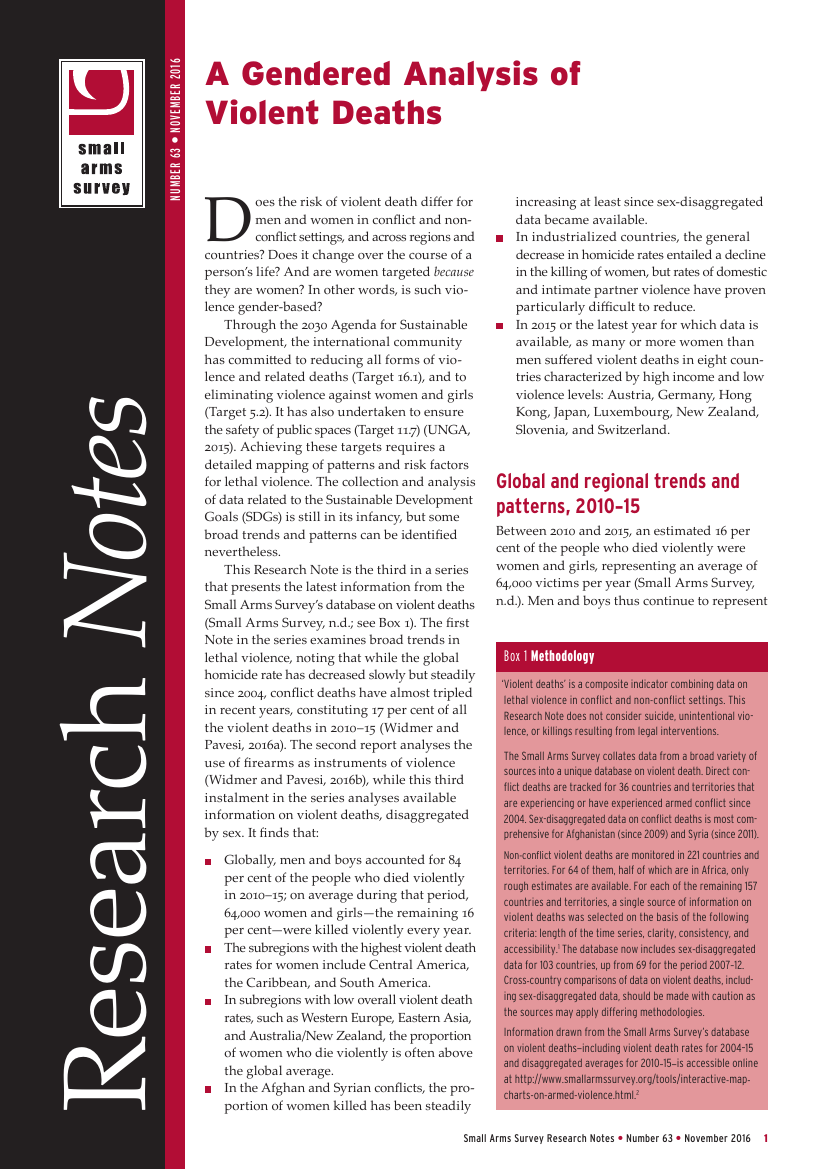
A Gendered Analysis of Violent Deaths (Research Note 63)
In the framework of the 2030 Agenda for Sustainable Development, the Small Arms Survey presents a study of available information on violent deaths, disaggregated by sex. A Gendered Analysis of Violent Deaths assesses variations in the risk of violent death for men and women in conflict and non-conflict settings. It finds that in some high-income countries, more women than men die violently every year, and that intimate partner violence remains a problem even when overall homicide rates decrease.
Based on the information from the Small Arms Survey’s database on violent deaths, the study is being released to coincide with ‘16 Days of Activism Against Gender-Based Violence’, an initiative of the UN Secretary-General’s campaign ‘UNiTE to End Violence against Women’. This study is the third in a series, following a Research Note that identifies broad trends in lethal violence and another that focuses on the use of firearms as instruments of violence.
The 2030 Agenda commits the international community to reducing all forms of violence and related deaths (Target 16.1) and to eliminating violence against women and girls (Target 5.2). It also calls for disaggregated data on violent deaths, which this study presents with a view to helping states achieve the Sustainable Development Goals.
Key findings from the study include:
- Globally, men and boys accounted for 84 per cent of the people who died violently in 2010–15; on average during that period, 64,000 women and girls—the remaining 16 per cent—were killed violently every year.
- The subregions with the highest violent death rates for women include Central America, the Caribbean, and South America.
- In the Afghan and Syrian conflicts, the proportion of women killed has been steadily increasing at least since sex-disaggregated data became available.
- In industrialized countries, the general decrease in homicide rates entailed a decline in the killing of women, but rates of domestic and intimate partner violence have proven particularly difficult to reduce.
- In 2015 or the latest year for which data is available, as many or more women than men suffered violent deaths in eight countries characterized by high income and low violence levels: Austria, Germany, Hong Kong, Japan, Luxembourg, New Zealand, Slovenia, and Switzerland.
Have your say about Small Arms Survey publications and products: take 5 minutes to fill out our questionnaire.